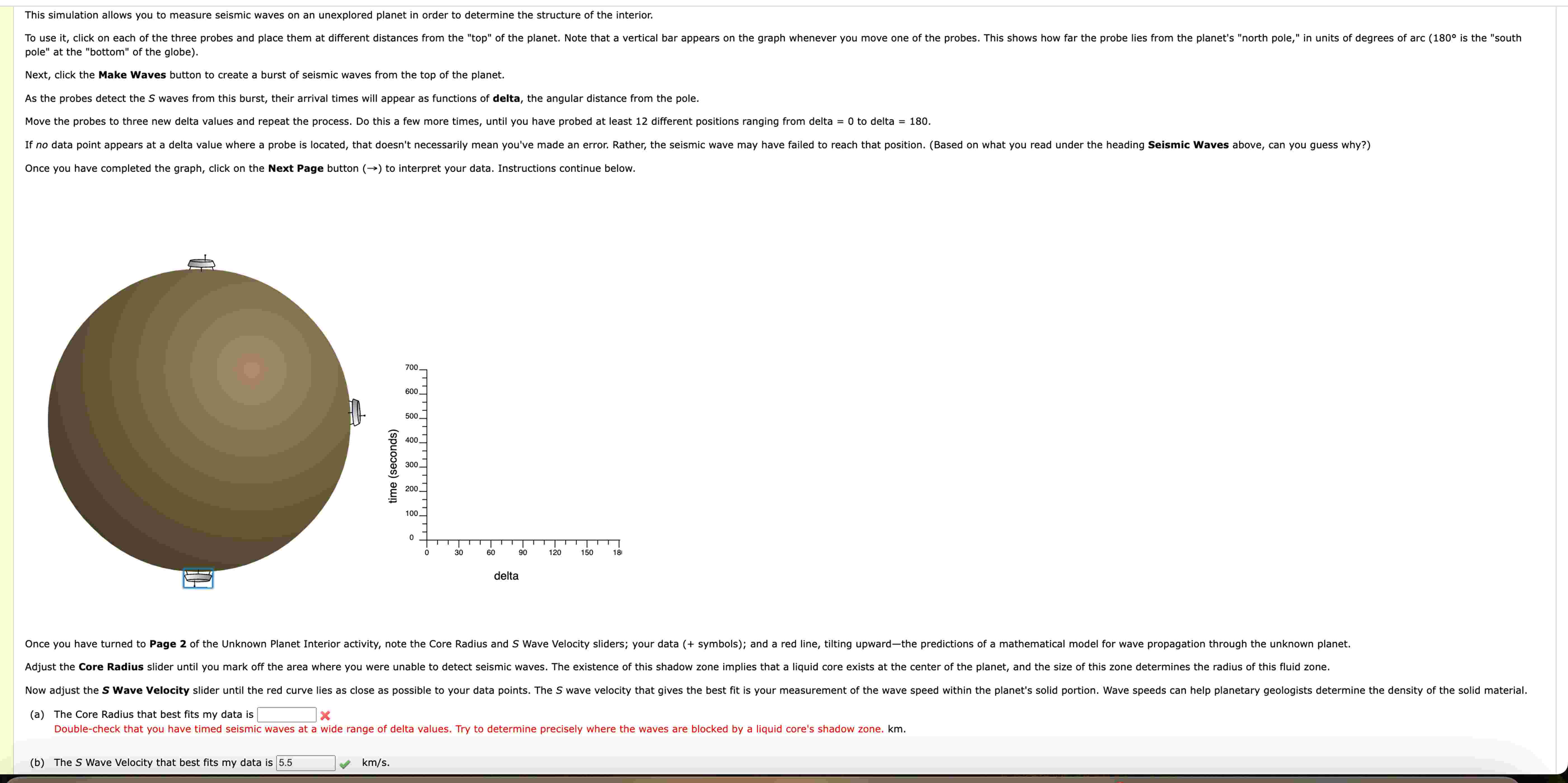(Solved): This simulation allows you to measure seismic waves on an unexplored planet in order to determine th ...
This simulation allows you to measure seismic waves on an unexplored planet in order to determine the structure of the interior. pole" at the "bottom" of the globe). Next, click the Make Waves button to create a burst of seismic waves from the top of the planet. As the probes detect the \( S \) waves from this burst, their arrival times will appear as functions of delta, the angular distance from the pole. Move the probes to three new delta values and repeat the process. Do this a few more times, until you have probed at least 12 different positions ranging from delta \( =0 \) to delta \( =180 \). Once you have completed the graph, click on the Next Page button \( (\rightarrow) \) to interpret your data. Instructions continue below. (a) The Core Radius that best fits my data is Double-check that you have timed seismic waves at a wide range of delta values. Try to determine precisely where the waves are blocked by a liquid core's shadow zone. km. (b) The \( S \) Wave Velocity that best fits my data is \( 5.5 \quad \mathrm{~km} / \mathrm{s} \).
